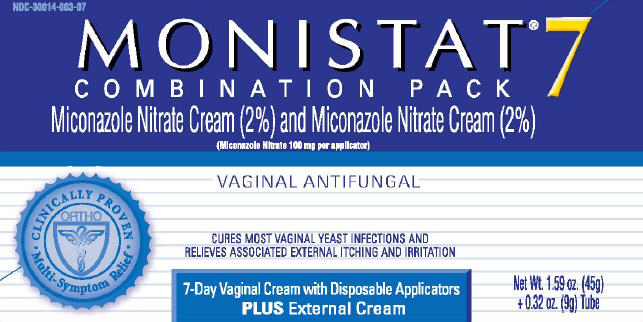Monistat for your mane?

YouTube testimonials touting Monistat as a head hair growth promoter have attracted the attention of local news, HuffPost, and MadamNoire. Could the results being seen by some Monistat-for-mane devotees be real? Yes – if a fungal infection is limiting their locks.

Monistat’s anti-fungal activity is due to miconazole nitrate (hereafter ‘miconazole’). This chemical inhibits the ability of many pathogenic fungi to make ergosterol – a chemical needed for sturdy, well functioning cell membranes. No ergosterol means weak, leaky membranes and the breakdown (lysis) of the target fungi. Candida albicans, the fungus causing vulvovaginal candidiasis (“yeast infections”), is no match for miconazole. Neither are the related fungi that cause ringworm, jock itch, and athlete’s foot. Miconazole has also been used to treat fungi that can wreak havoc on the scalp, such as Pityrosporum ovale (also known as Malassezia furfur) and Trichosporon beigelii.

Like Candida albicans, Pityrosporum ovale is a part of our human flora that when over-produced can lead to… shall we say… problems. In the case of Pityrosporum ovale, dermatitis, folliculitis, and dandruff. Less likely to be found in our normal flora is Trichosporon beigelii, which is common in soil. Trichosporon beigelii is behind ‘white piedra, which presents as “…irregular, soft, white or light brown nodules, 1.0-1.5 mm in length, firmly adhering to the hairs.”
Such fungal take-overs of the scalp may cause hair loss and just plain ol’ general scalp ill health, which could possibly limit hair growth. Treating a scalp over-run by fungus with miconazole via Monistat could return the scalp to good health. Which may return one’s noggin to normal hair production if a fungal infection was to blame to sluggish hair growth.
‘May’, ‘could’, ‘possibly’, ‘if’…
The use of Monistat heralded in those YouTube testimonials is off-label and likely without the input of a doctor. If your scalp seems under attack, it’s best to consult your general practitioner and/or dermatologist. Before you have fun with Monistat, make you’ve actually got a fungus problem! Those scalp whoas may have absolutely nothing to do with a fungal infection. Perhaps your hair just simply isn’t growing as fast as you’d like? Monistat isn’t going to do much for you. What if you do have fungal infection of the scalp? Your doctor may recommend a different anti-fungal product proven to work better than Monistat’s miconazole for your particular infection.
Featured image from Drugs.com, miconazole structure image from ChemSpider.com, and white phaedra image from the ATSU faculty website of Dr. Neal Chamberlain.





This is interesting. The production of ergosterols is mediated through cytochrome P450 enzymes (as are a lot of things), and which human physiology uses for a lot of things too. It turns out miconazole does have side effects, and those side effects (called “interactions”) are mediated through human P450 enzymes. Anticoagulants inhibit the P450 enzyme that activates a clotting factor, statins inhibit the P450 that is in the synthesis pathway for cholesterol.
http://en.wikipedia.org/wiki/Miconazole
One of the potential side effects of miconazole is messing with nitric oxide synthase, which we know is one of the most important enzymes to not be messed with. ;)
http://www.ncbi.nlm.nih.gov/pubmed/9873034
If miconazole does increase growth of hair through a mechanism other than antifungal activity, it might do so by messing with androgen synthesis. Androgens are synthesized and metabolized through P450 enzymes too, and hair growth can be inhibited by androgens. That is what male-pattern baldness is, hair growth inhibited by androgen sensitive hair follicles in the scalp. Block their sensitivity to androgens (such as with propecia) , and they start growing hair.
http://en.wikipedia.org/wiki/Propecia
If that is the mechanism, it might have side effects like the other anti-androgens used for hair growth, like propecia. If it does have anti-androgen side effects, it might be a bad idea to use it on the scalp for long periods of time and especially while pregnant. Propecia is a known human teratogen, as are some of the things that miconazole interferes with (phenytoin for example).
Home remedies like this always make me wonder, who was the first to try this? Who thought, hmmm, I should put some vag cream on my head?
Vag cream? And give your money to big pharma? A true home-remedy-opath uses yogurt!
DISCLAIMER: The above advice is best taken maxillolingually.
True! And garlic. On an atheist mom group I belong to, the suggestion of putting garlic in one’s vagina has come up more than once, by different people, for different problems, as has yogurt. Apparently, both cure all kinds of female ills.
I’m not sure who was the fist to do this but they are probably related to the poor guy who first brushed his teeth with Preparation H.